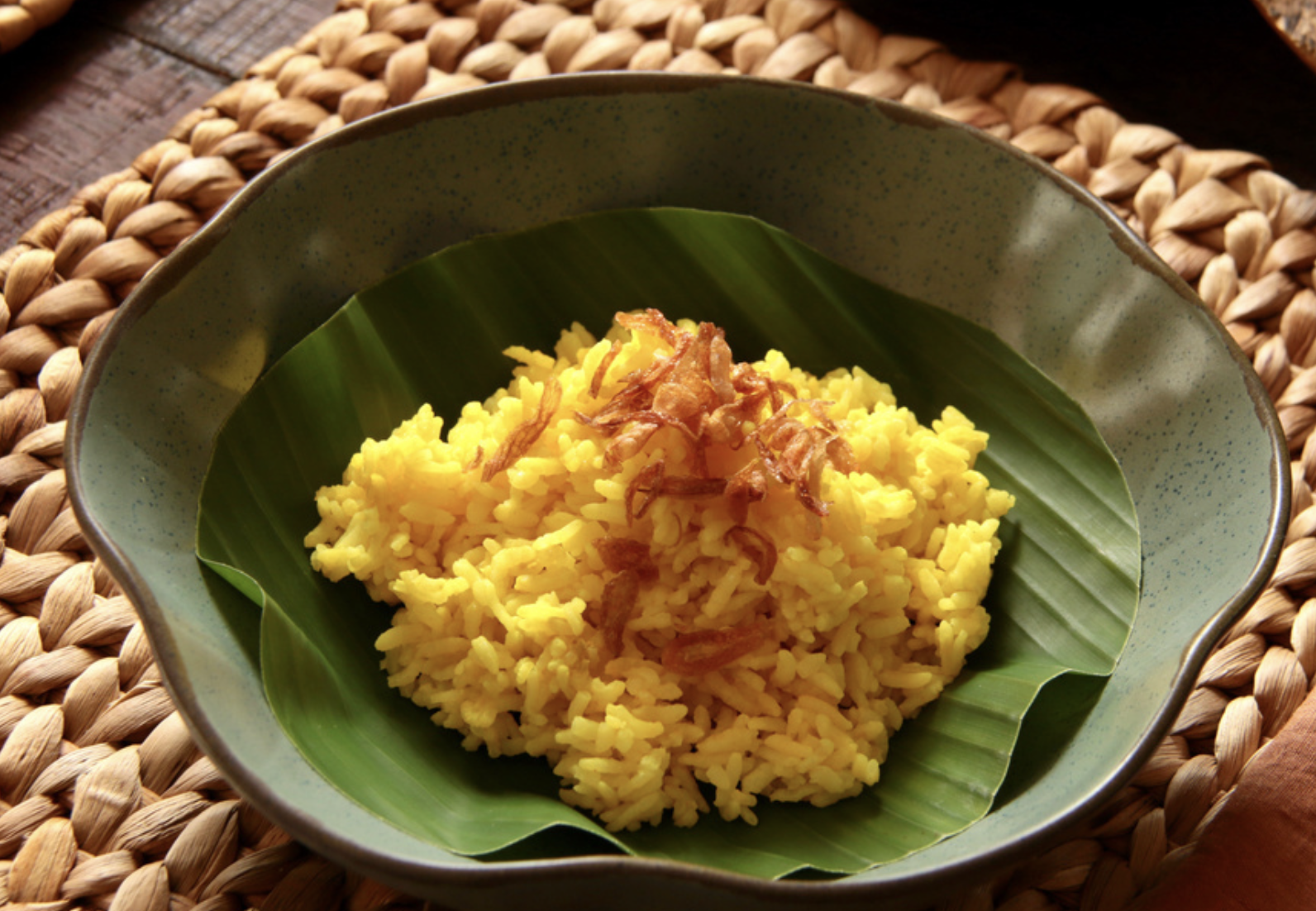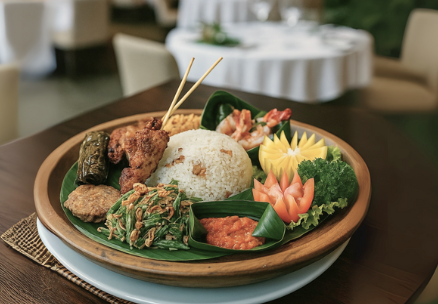Indonesia’s culinary landscape beautifully reflects its rich cultural history, with European influences adding unique touches to traditional dishes across the archipelago. While Bali’s cuisine largely reflects its native culture and traditions, certain dishes and culinary practices and presentations brought a shared history of European interactions.
Rijsttafel: The Dutch introduced the rijsttafel, or “rice table,” as a way to showcase Indonesia’s culinary diversity. This banquet-style feast features rice served with a variety of small Indonesian dishes, allowing diners to sample flavors from across the archipelago. While most popular in Java, the rijsttafel has influenced dining in Bali, especially in tourist settings, offering a flavorful journey through Indonesia’s spices and culinary traditions.
Klappertaart is a Dutch-inspired dessert known for its creamy, custard-like texture and the flavor of young coconut. Named from the Dutch words klapper (coconut) and taart (cake), this treat combines flour, milk, butter, and eggs, often with cinnamon, raisins, and nuts. It’s become a cherished delicacy, especially during festive occasions.
Perkedel: Derived from the Dutch frikadel, these savory patties made from mashed potatoes mixed with minced meat or fish are seasoned with local spices and deep-fried to golden perfection. Perkedel Jagung, made from mashed corn, is now a popular side dish with Balinese Nasi Campur meals.
Besides Dutch influence, the Portuguese, who arrived in the 16th century, introduced ingredients and cooking techniques that transformed the archipelago’s culinary landscape. One key contribution is the introduction of piri-piri (small chili peppers), now central to many Indonesian sambals (chili pastes). In Bali, the use of chili peppers in sambals reflects this influence, adding depth and heat to local dishes.
Risoles: This popular snack, inspired by Portuguese rissoles, is a savory pastry filled with spiced chicken or vegetables, breaded and fried. The Portuguese also introduced cassava and sweet potatoes, which are now key ingredients in Balinese snacks and desserts.
While these European influences have left their mark, Balinese cuisine remains deeply rooted in indigenous practices, emphasizing fresh ingredients and a harmonious balance of flavors. Join us at BBTF 2025 to explore this unique fusion of flavors and cultures.






